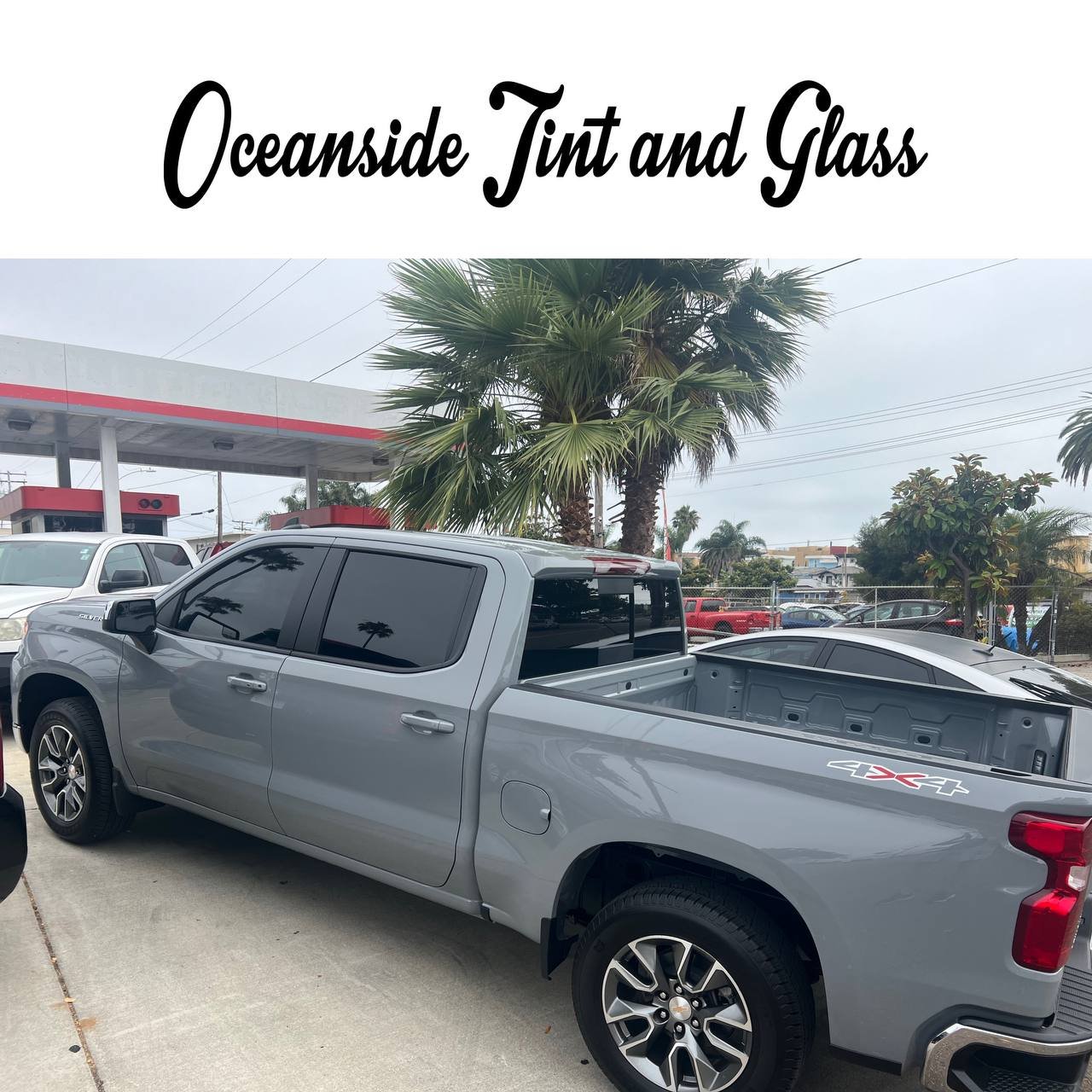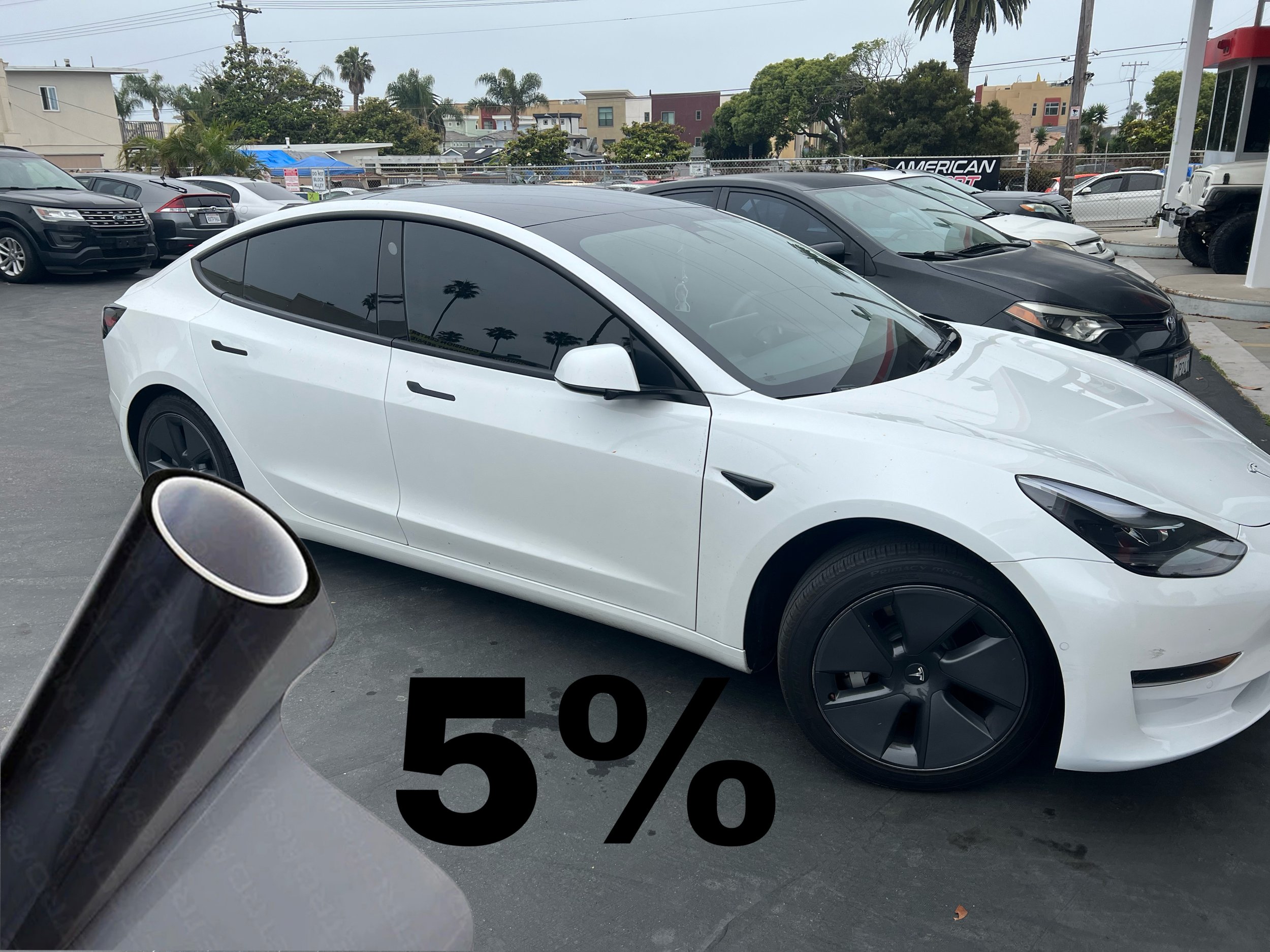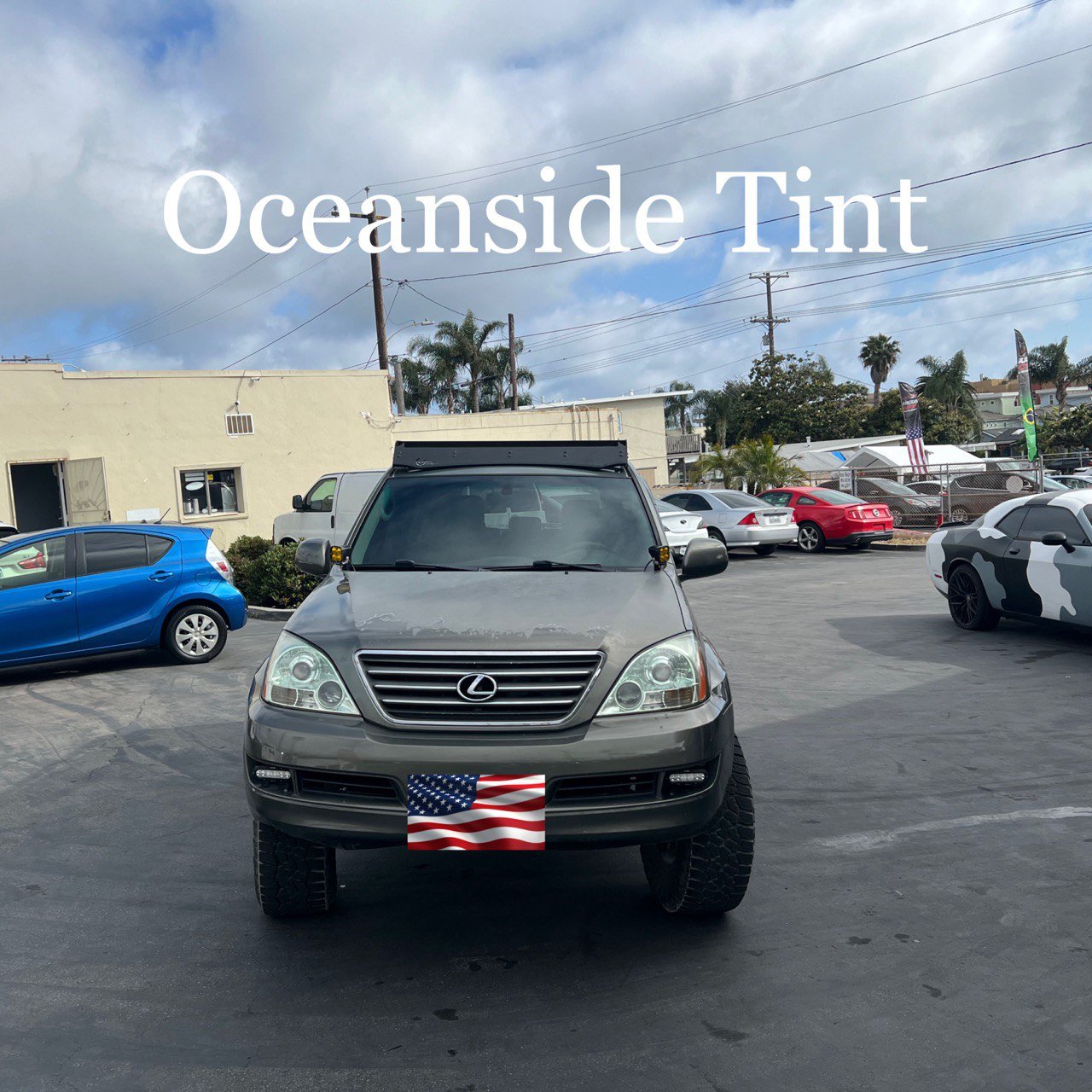
Auto window Tint
Window Tinting 760-543-6639
Window Tinting 760-543-6639
Ceramic tint is a type of window film that is known for its advanced heat rejection properties, UV protection, and durability. Unlike traditional tinted films, ceramic tints do not contain metal or dyes, allowing them to provide excellent visibility without interfering with electronic devices such as GPS, cell phones, and satellite radios.
One of the significant benefits of ceramic tint is its ability to block a significant percentage of infrared radiation, which is responsible for heat buildup. This can lead to a cooler interior for vehicles and buildings, reducing the need for constant air conditioning and potentially lowering energy bills. Additionally, ceramic tints offer high UV protection, helping to safeguard occupants from harmful sun exposure, which can cause skin damage and fading of interior materials.
Ceramic tint is also renowned for its durability. It tends to be scratch-resistant and can withstand the elements better than traditional films, making it a worthwhile investment for long-term use. The application of ceramic tint is suitable for various vehicles, residential windows, and commercial properties, providing a wide range of options for enhancing comfort and aesthetics.
When considering ceramic tint, it is essential to review the different levels of shading and select a film that complies with local regulations. Proper installation by a trained professional is also crucial to ensure optimal performance and longevity of the tint.
Oceanside Tint and Glass
409 S. Coast Hwy Oceanside CA 92054
call / text
760-543-6639

The Way We Do Ceramic Tint
At Tint409, we prioritize quality and precision in every ceramic tint installation. Our process begins with an in-depth consultation to understand your needs and preferences. Once we have a clear understanding, we proceed with the following steps:
Step 1: Preparation
The vehicle is thoroughly cleaned to remove dust, dirt, and any residues that may interfere with tint adhesion. This ensures a smooth application surface.
Step 2: Material Selection
We utilize high-quality ceramic tint films, designed for superior heat rejection and UV protection. These films maintain clarity and do not interfere with electronic signals, making them suitable for modern vehicles.
Step 3: Precision Cutting
Each piece of tint is meticulously measured and cut to fit the vehicle's windows precisely. Our advanced cutting technology ensures that every piece matches the contours of your vehicle perfectly.
Step 4: Application
Using a specialized installation technique, our trained technicians apply the tint to the windows. This step involves carefully layering the film, eliminating bubbles, and ensuring clean lines for a professional look.
Step 5: Final Inspection
After installation, we perform a thorough inspection to ensure the tint is applied correctly and meets our quality standards. We check for any imperfections and make necessary adjustments.
Step 6: Education
Once the installation is complete, we provide guidance on the care and maintenance of your new ceramic tint. This includes tips on how to clean the windows and what to avoid in order to extend the lifespan of the tint.
By following these steps, we guarantee a high-quality ceramic tint application that enhances the aesthetics and functionality of your vehicle.
Window tinting involves applying a thin laminate film to the interior or exterior of glass surfaces, most commonly in vehicles and buildings. The primary purposes of window tint are to reduce glare, enhance privacy, and provide UV protection.
There are various types of window tint films available, including dyed, metallic, and ceramic tints. Dyed films offer a basic level of heat rejection and privacy, while metallic films reflect heat and provide a more sophisticated appearance. Ceramic tints are known for their excellent heat rejection properties and clarity, without interfering with electronic signals.
When considering window tinting, it's essential to be aware of local laws and regulations, as many jurisdictions have specific guidelines regarding the allowable tint levels on vehicles and buildings. For optimal performance and appearance, proper installation by a certified professional is recommended, ensuring that the film adheres correctly and lasts for many years.
In addition to comfort and privacy, window tint can protect interior surfaces from sun damage, helping to maintain the value of vehicles and property. Overall, window tinting is a practical investment that adds both aesthetic appeal and functionality.
Steps to Remove Window Tint:
Prepare the Area: Park the car in a location with good lighting, preferably indoors or in a shaded area to prevent the adhesive from hardening too quickly.
Heat the Tint: Use a heat gun or hairdryer to warm up the tint film. Start from a corner and apply heat evenly to loosen the adhesive. Hold the heat source a few inches away to avoid damaging the glass.
Peel the Tint: Once the tint is warm, gently peel back the corner using your fingers or a plastic scraper. Pull slowly to avoid tearing the film. If it tears, reapply heat to the remaining pieces to help loosen them.
Remove Adhesive Residue: After the tint has been removed, you may notice some adhesive residue left on the glass. Spray the window cleaner or soapy water onto the area. Let it sit for a few minutes to soften the adhesive.
Scrape the Residue: Use a plastic scraper or razor blade at a 45-degree angle to gently scrape away the residue. Be careful not to scratch the glass.
Clean the Window: Once all the adhesive is removed, spray the window with glass cleaner and wipe it down with a microfiber cloth for a streak-free finish.
Final Touches: If there are still stubborn spots, consider using a commercial adhesive remover for a thorough clean. Follow the product instructions carefully.
Dispose of Materials Properly: Ensure that you dispose of the old tint and any waste materials responsibly.
By following these steps, you can effectively remove old window tint from your car, preparing it for a new application or simply restoring the clarity of the glass.

Make it stand out
Oeanside Tint and Glass
760-543-66
Auto window tinting is a process that involves applying a thin film to the windows of a vehicle. This film is designed to reduce glare, block harmful UV rays, and enhance privacy.
There are various shades and types of Tint available, which allow vehicle owners to select options that meet their aesthetic and functional preferences.
Benefits of Auto Window Tinting:
UV Protection: Tinted windows can block up to 99% of harmful ultraviolet rays, protecting both passengers and the vehicle's interior from sun damage.
Heat Reduction: Window films can significantly reduce the amount of heat that enters the vehicle, making it more comfortable during hot weather and reducing the need for air conditioning.
Glare Reduction: Tints help minimize glare from the sun and headlights of oncoming vehicles, providing a safer driving experience.
Increased Privacy: Tinted windows can enhance privacy for passengers and belongings within the vehicle, deterring theft.
Aesthetic Appeal: A well-tinted vehicle can improve its overall appearance, giving it a sleek and polished look.
Types of Auto Window Tinting Films:
Dyed Window Film: This film uses dye to absorb heat and is primarily used for aesthetic purposes. It does not provide as much heat reduction as other types.
Metalized Window Film: This type contains tiny metal particles that reflect heat away from the vehicle. It offers glare reduction and increased durability but may interfere with electronic signals.
Carbon Window Film: Carbon tints are known for their superior heat rejection and UV protection without the reflective properties of metalized films. They maintain a sleek appearance.
Ceramic Window Film: This premium option provides excellent heat rejection and UV protection while being non-reflective. It also does not interfere with electronic signals.
Installation Considerations:
The installation of auto window tinting should be performed by a professional to ensure a seamless and effective application. Proper installation can also help prevent issues such as bubbling and peeling. It's important to check local regulations regarding window tinting, as there are laws that dictate permissible levels of tint for different windows.
In summary, auto window tinting offers a range of benefits, from improved comfort to enhanced vehicle aesthetics. Choosing the right type of film and professional installation can maximize these benefits and ensure long-lasting results.




